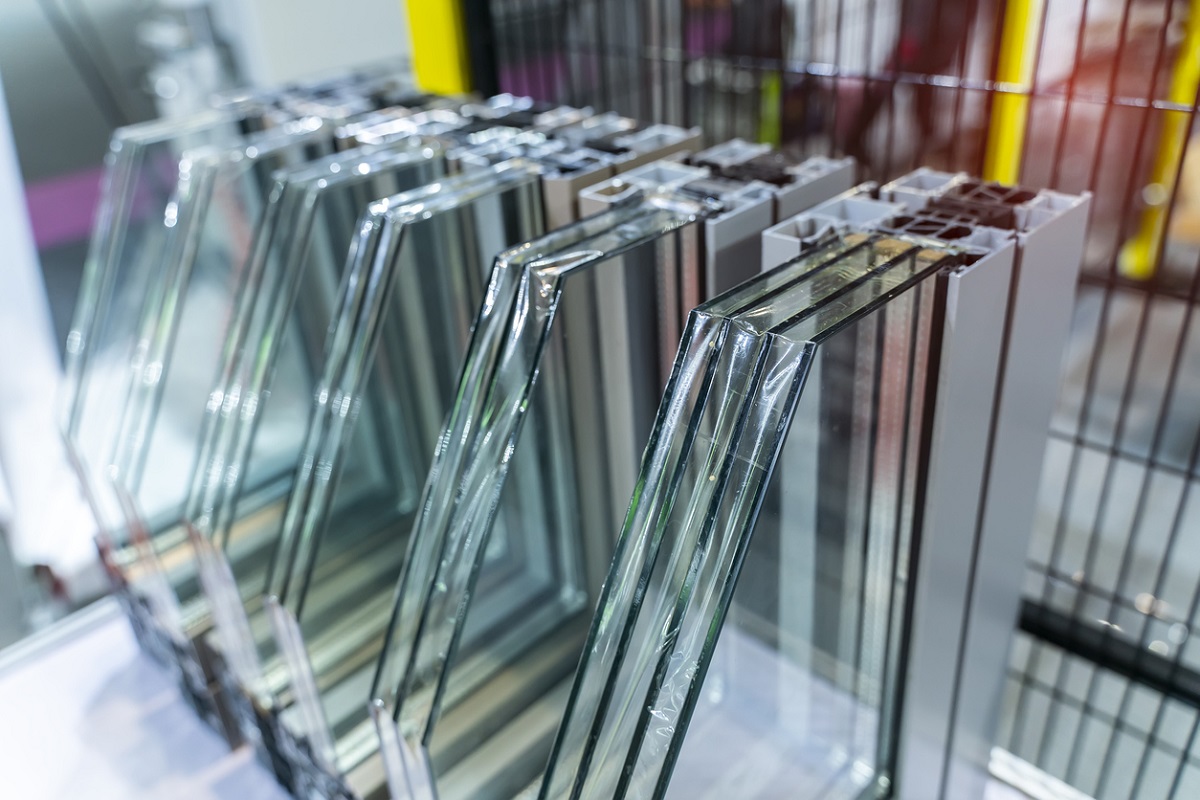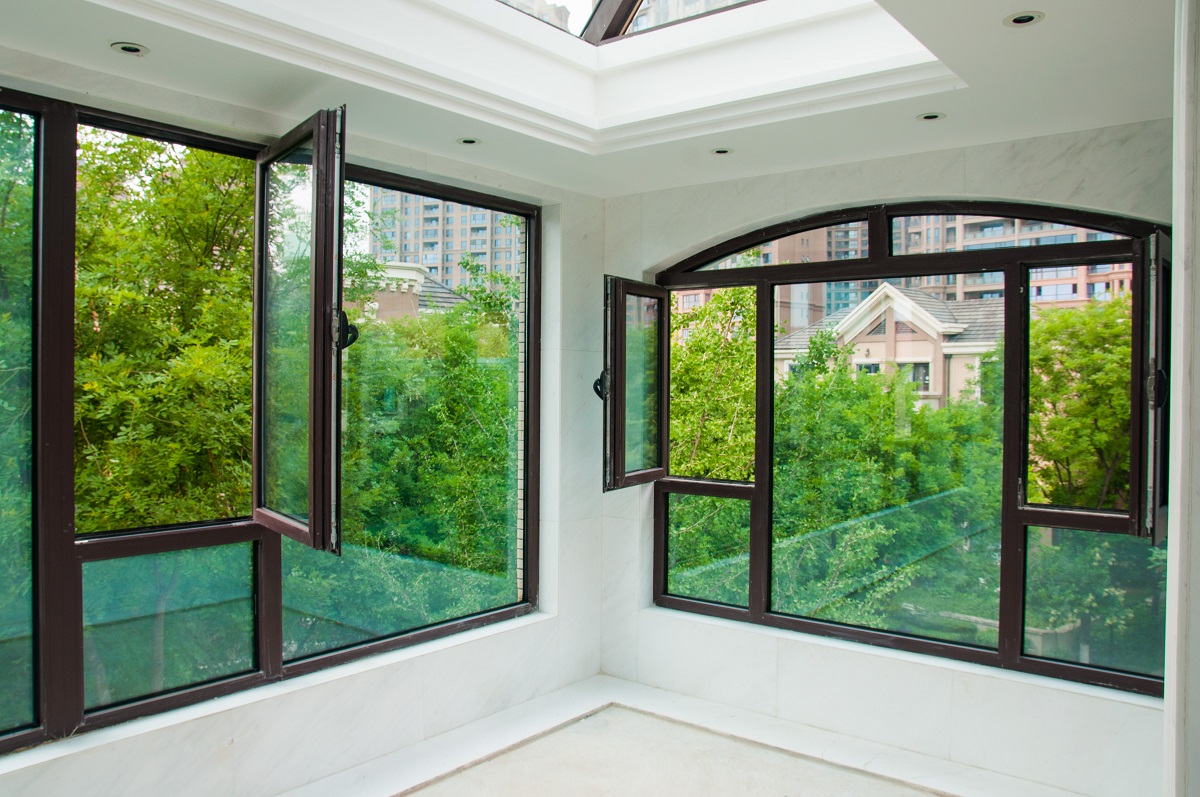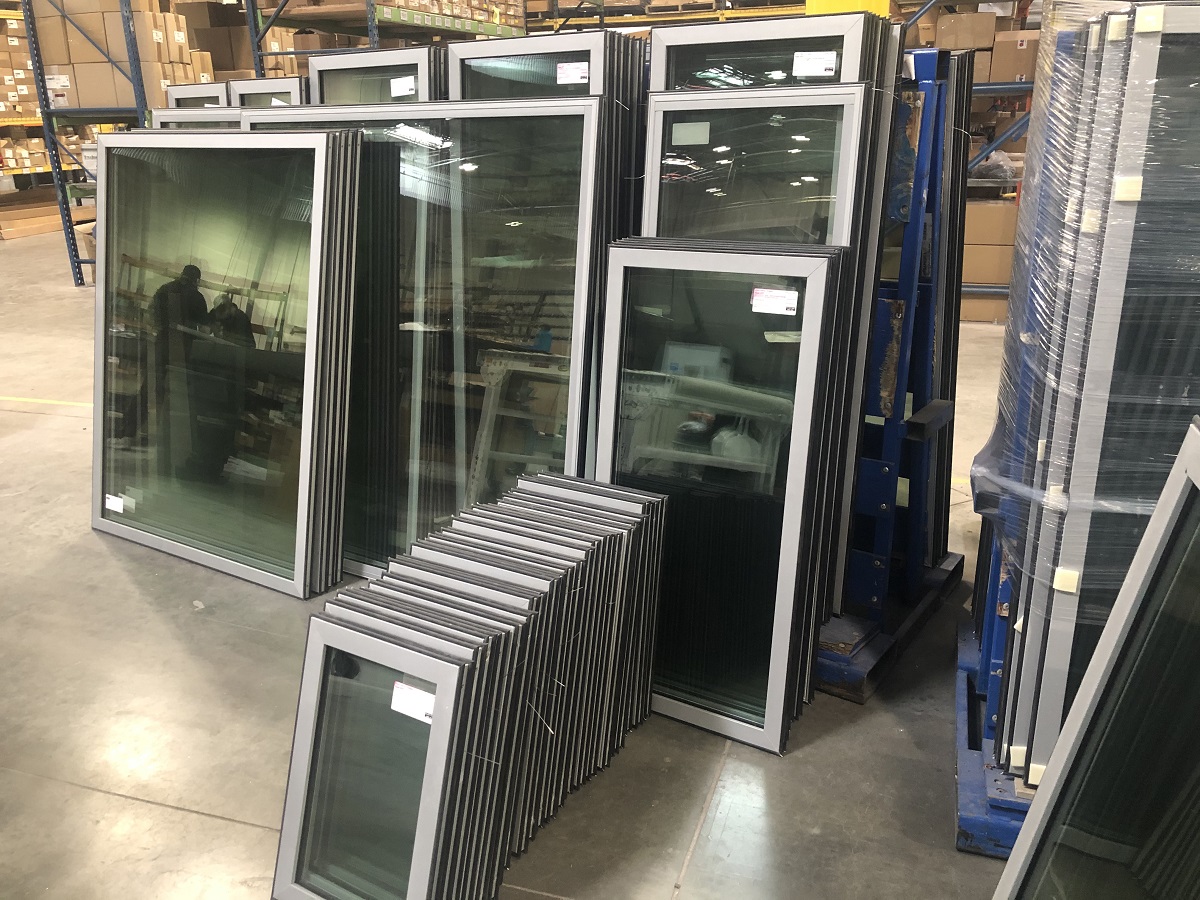Next-Level Performance
Glass solutions for superior thermal efficiency and energy generation
Buildings account for an estimated 40 percent of the problem of global carbon emissions, with building operations alone producing 27 percent of total emissions, according to Architecture 2030.
Glass can be a critical component in addressing operational carbon emissions by reducing energy use in existing and new buildings, says Stephen Selkowitz, principal of Stephen Selkowitz Consultants and affiliate at Lawrence Berkeley National Laboratory.
A recent study from Glass for Europe emphasized the difference high-performance glazing can make:
- Replacing all existing windows with “readily available high-performance glazing” by 2030 would cut annual energy use by 29 percent and annual carbon emissions by 28 percent.
- Replacing all existing windows with “improved high-performance glazing” by 2050 would cut annual energy use and carbon emissions both by 37 percent.
But there is more than just energy savings and climate benefits driving the use of higher-performing glass technologies.
The recently published Energy Star Version 7.0 greatly increases thermal performance requirements for windows. Meeting the more stringent performance thresholds in the Northern Climate Zone, which covers about 40 percent of the U.S., will require the most advanced double-glazed insulating glass units or, more likely, triple- or quad-glazed IGUs, says Selkowitz. “We will need about 10 to 20 million triple-glazing units per year,” he estimates. Get a closer look at Energy Star Version 7.0 and what it means for the residential fenestration industry.
The Inflation Reduction Act of 2022 includes numerous provisions that will drive performance improvements in buildings. According to Tom Culp, technical code consultant for the National Glass Association and owner of Birch Point Consulting LLC, the IRA includes $1 billion in state and local government grants intended to accelerate adoption of the latest energy codes and a zero-energy code. The IRA also includes home and building energy-efficiency tax credits, including credits for doors meeting Energy Star requirements and for windows certified to the Energy Star Most Efficient program.
ASHRAE 90.1, state stretch codes and the in-process 2024 International Energy Conservation Code also include language that sets stringent performance requirements.
Product #1 Advanced IGUs

Above: Insulated triple glazing at cross-section.
Basics: Widely used in commercial and residential construction since the 1960s, IGUs consist of two or more lites of glass separated by a hermetically sealed air space to provide thermal, sound and solar insulation. Advanced IGUs offer additional performance improvements through methods such as filling the air space with gas, using warm-edge or other higher thermal performance spacers, or adding additional lites (and thus additional cavities) to the unit. For better solar control, low-emissivity coatings can be added to the No. 2 surface, and now, thanks to advancements in coatings, the No. 4 surface, of a traditional double-glazed unit.
Performance: Highly insulating glazing solutions—doubles with improved spacers and two low-e coatings, or multi-cavity units—will likely be required to meet the more stringent energy codes and standards, says Culp.
The updated Energy Star requirements will also pose challenges. In the previous version, about 80 percent of the residential window market met the 0.27 center of glass U-factor requirement for the Northern climate. The new Energy Star 7.0 moves that number to a U-factor of 0.22. Only the very-best-performing double-glazed units currently on the market would be able to meet the new requirements, Selkowitz says. “For the first time in 20 or 25 years, we’re having to take a hard look at that standard double-glazed, argon-filled, low-e unit.”
Development: According to Ducker Worldwide, IGUs account for about 80 percent of the residential market; however, multi-cavity IGUs represent only about 3 percent of the market share for residential glazing. The global insulating glass window market is projected to reach U.S. $17.2 billion by 2026, growing at a compound annual growth rate of 6.1 percent from 2021 to 2026, according to ResearchAndMarkets.com. The growing trend of green rating systems in various countries is likely to contribute to the growth of the insulating glass window market, with North America projected to be the largest regional market.
The insulating market has also become more complex with the addition of several emerging insulating glass technologies, including vacuum insulating glass, thin-glass multi-cavity IGUs, IGUs with suspended film and units with Aerogel in the cavity.
Challenges: The North American insulating glass market has faced challenges moving beyond traditional double-glazed units. Traditional multi-cavity IGUs, while popular in Europe, have gained only minimal traction in the U.S. “There are obstacles to triple pane. Many manufacturers say it is too heavy, too wide, too expensive. It has long ROIs,” says Selkowitz.
Although krypton gas-filled insulating units had gained popularity in recent years as a higher-performing gas option for IGUs, high demand for the gas in the communication sector has spiked the cost of krypton and, because it is largely sourced from Ukraine and Eastern Europe, it is difficult to access, says Selkowitz.
Product #2 Building Integrated Photovoltaics
Above: Ubiquitous Energy solar panel project in Boulder, Colorado. Photo courtesy of Ubiquitous Energy.
Basics: Building-integrated photovoltaics are solar energy-generating systems incorporated into windows, façades, canopies, skylights and more. Glass is an essential component in most BIPV products, protecting solar cells and modules while maximizing solar and light transmission.
Performance: BIPV meets the requirements for sustainability and integration of alternative sources of energy. Growing the use of onsite renewable energy is critical to achieving net-zero energy and carbon targets and will also help increase grid resiliency and U.S. energy independence, according to the NGA document “High-Performance Glazing Promotes Building Resiliency.”
Development: Coming to fruition in the 1990s, the evolution of BIPV technology in recent years has helped it become more mainstream, says Jemssy Alvarez, product manager, Vitro. Alvarez expects to see BIPV in more places in and around buildings as owners and architects look to more sustainable energy sources. Additionally, industry manufacturers have developed BIPV products that offer a range of aesthetic options for designers, including transparent or near-transparent BIPVs.
“Transparent solar window products are aesthetically pleasing and energy-efficient windows. They look and function like traditional windows, but also double as renewable energy generation sources that help provide clean electricity to the home or building,” says Veeral Hardev, vice president of strategy, Ubiquitous Energy.
Ubiquitous Energy is in the early commercialization phase with transparent solar window products, says Hardev. “We are currently building our first high-volume transparent solar window manufacturing facility here in the U.S. We expect that this facility will start producing window units as large as 5 feet by 10 feet in 2025,” says Hardev. “These window units will be sold into the residential and commercial markets directly through our partners, including [Andersen Windows & Doors], as well as commercial building developers and contractors.”
Challenges: Alvarez says it’s hard for BIPV to compete with the pricing of what someone will pay in electricity. “However, in time, the cost of energy isn’t going to get any cheaper and at some point, there’s going to be a parity between what you can do with these renewable sources and what it will cost you from the standard,” he says.
Product #3 Vacuum Insulating Glass

Above: Residential project in Shaanxi, China, with laminated LandVac VIG from LandGlass in the windows and skylights. Photo courtesy of VIG Glass Technologies.
Basics: In vacuum insulating glazing, or VIG, two glass panes are hermetically sealed together around the edges, separated by micro spacers, and the air between the glass panes is extracted. The vacuum minimizes conduction and convection heat losses, lowering the U-factor at a very thin cavity depth.
Performance: VIG’s overall insulating performance rivals that of traditional windows with an R-value of 10, approaching a properly insulated wall rated at 12 or higher, says Daniel Sutton, product manager for Vitro Architectural Glass.
“Historically speaking, the insulating value of windows has been dramatically less performing than a wall with insulation,” he says. “With vacuum insulating glazing, now you’re leveling the playing field in terms of the insulating performance that is roughly on par with wall insulation.”
Development: “Where VIG is going, it’s now getting into bigger sizes with architects and designers. The bigger the size, the bigger the windows, the better we can get more natural light in,” Sutton explains. Additionally, manufacturers will begin moving toward temperature/heat-strengthened glass because of its versatility, Sutton says.
Challenges: VIG comes with some fabrication challenges. According to NGA’s technical paper on VIG, the units are limited in size. Units must have at least two 90-degree corners and shapes are limited to fairly simple parallelograms or simple arcs. VIG is also not available as bent glass.
Sutton says another limitation with VIG is its dependence on what low-e coating is used within the vacuum space; hopefully, as the technology evolves there will be more freedom to use different high-performing, low-e coatings to meet different energy restrictions or energy code mandates.
There is limited North American-based domestic sourcing for VIG, so access and cost can be a challenge. Sutton says Vitro hopes to mitigate this in the future and begin VIG manufacturing in the U.S.
Product #4 Thin Glass

Above: WinSerts in the Alpen Glass warehouse.
Basics: The glass industry is looking to thin glass—generally considered any glass less than 1.6 millimeters thick—in two key applications to improve window system thermal performance. First is the use of thin glass used as interior lite or lites in multi-cavity IGUs. The second, more recent, application is thin glass in window retrofit systems.
Thin glass is produced in two methods: horizontal float soda line (a process NGS Group uses) and vertical fusion drawn boro-aluminosilicate (a process Corning uses).
Performance: When used in a multi-cavity IGU, thin glass allows for large thermal performance improvements without adding much weight. Additionally, because thin-glass IGUs are thinner than traditional multi-cavity IGUs, existing frame systems can accommodate them.
“With the thin triple, you get about an R-8 center of glass,” says Selkowitz. “And if you have a slightly larger and wider glass package, you can add two pieces of thin triple glass (making a quad IGU) and get R-14 center of glass.”
Development: Selkowitz invented thin-glass triple glazing in the late 1980s, achieving an invention registration in 1991. However, “no one wanted triples back then and thin glass didn’t exist,” Selkowitz says. Then came the fast emergence and growth of smartphones and flat-screen televisions in the 2000s, which created a new market for thin glass.
Today, thin glass is readily available and affordable. “There is a whole industry out there that knows how to make, cut and transport thin glass. It’s a pretty fast learning curve to bring this to industry,” Selkowitz says.
Alpen High Performance Products has produced thin-glass, multi-cavity IGUs in North America for several years, says company President Brad Begin. The company began working with the U.S. Department of Energy on developing thin-glass triples for commercial use in 2018. By 2019, it launched it as a product offering following extensive testing and field validation. By mid-2023, the company expects to pass 1 million square feet of thin-glass products sold into the market for commercial and residential applications.
“Thin triples are at niche volume now, but [the technology] has the potential to be more mainstream,” says Selkowitz. “From the technology side, there is nothing to hold it back. The price is fine. The handling is fine. What’s needed is the market pull side.”
Challenges: “The one thing you can’t do with thin glass is temper it,” says Selkowitz. However, there is ongoing research in the industry to address tempering issues and Begin notes the industry has “six different market-ready solutions that solve the issue.”
The thin-glass industry has also been limited by size, though Begin says Alpen sources thin-glass sheets that are typically 50 to 60 square feet, with access to sizes of 70 square feet or larger.
Resources
Advanced IGUs
Performance Improvements in IGUs Glass Technical Paper
Webinar with Steve Selkowitz discussing the latest IGU technologies, and the research and development still in progress.
BIPV
Glass Properties Pertaining to PV Applications Glass Technical Paper
VIG
Article by Tom Culp: Triple Glazing and Embodied Energy
Thin Glass